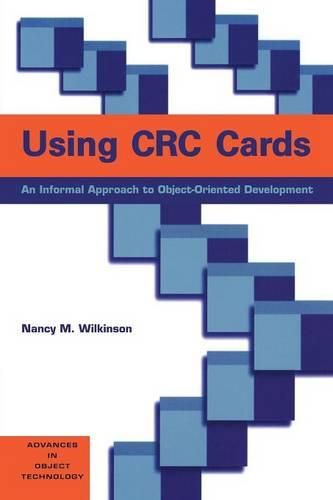Readings Newsletter
Become a Readings Member to make your shopping experience even easier.
Sign in or sign up for free!
You’re not far away from qualifying for FREE standard shipping within Australia
You’ve qualified for FREE standard shipping within Australia
The cart is loading…






Using CRC Cards is a comprehensive introduction to CRC (Class, Responsibility, Collaborator) cards. It includes a description of the cards and how they can be used in interactive sessions to develop an object-oriented model of an application. In this book, the author draws on her years of project experience to describe how CRC cards can contribute at all stages of the software lifecycle. It includes practical examples of how to utilize CRC cards in projects using either formal or informal development techniques. Using CRC Cards also provides a detailed look at how designs created with CRC cards can be mapped to an effective and efficient implementation in C++. Software analysts, designers and developers will use this book to guide their transition to the object-oriented paradigm, as well as provide a process for development of their object-oriented applications.
$9.00 standard shipping within Australia
FREE standard shipping within Australia for orders over $100.00
Express & International shipping calculated at checkout
Using CRC Cards is a comprehensive introduction to CRC (Class, Responsibility, Collaborator) cards. It includes a description of the cards and how they can be used in interactive sessions to develop an object-oriented model of an application. In this book, the author draws on her years of project experience to describe how CRC cards can contribute at all stages of the software lifecycle. It includes practical examples of how to utilize CRC cards in projects using either formal or informal development techniques. Using CRC Cards also provides a detailed look at how designs created with CRC cards can be mapped to an effective and efficient implementation in C++. Software analysts, designers and developers will use this book to guide their transition to the object-oriented paradigm, as well as provide a process for development of their object-oriented applications.